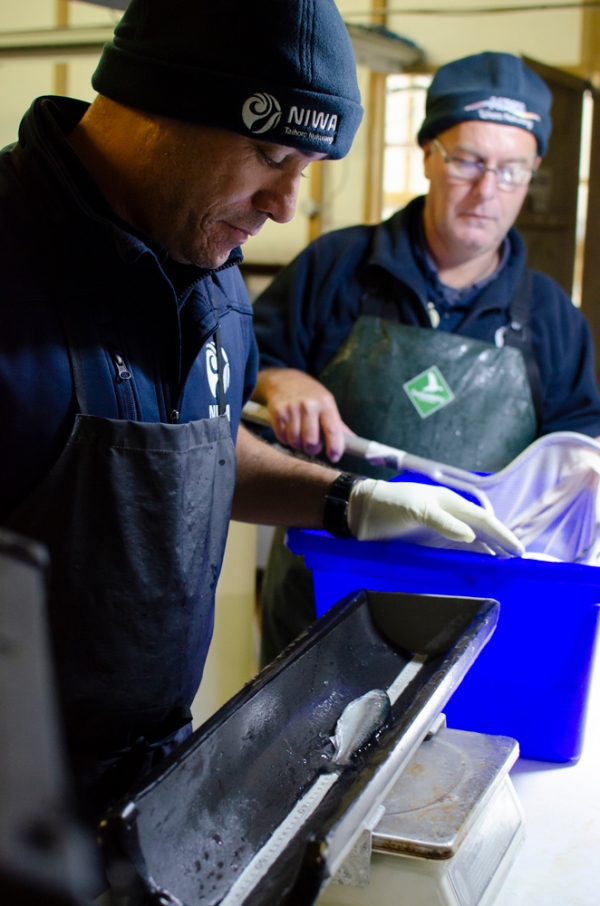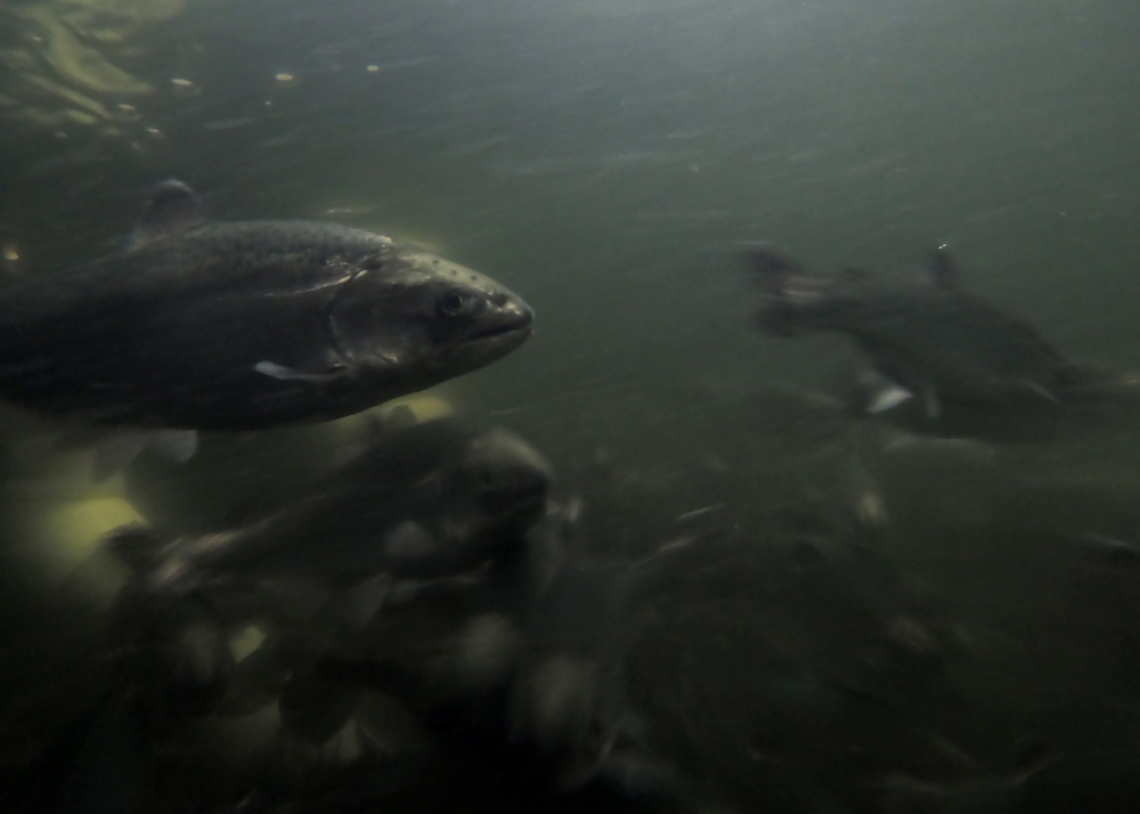NIWA scientists have made a breakthrough that may underpin expansion of the high-value New Zealand salmon farming industry.
The industry is looking to expand by farming in more exposed locations, but NIWA aquaculture scientist Dr Javed Khan says such growth is likely to be constrained unless new approaches are taken in the hatcheries that supply the juvenile fish to the farms.
“Hatchery developments have lagged behind other advances in the New Zealand salmon industry which means there is an inability to produce the number and quality of juveniles needed to sustain future expansion,” Dr Khan says. “This has been the impetus behind our recent research.”
In the past few months, Dr Khan and University of Auckland PhD student Hsiao Heng (Tony) Pan have been conducting trials at NIWA’s Northland Marine Research Centre that have shown that juvenile Chinook salmon production can be ramped up in hatcheries if farming densities and husbandry conditions are optimised. This is the first study of its kind and could solve a critical problem for New Zealand salmon farmers.
The most commonly farmed salmon around the world is Atlantic salmon, which can operate in hatchery densities of more than 80kg of fish per cubic metre of water.
However, New Zealand farms Chinook salmon which is highly valued as a premium product and makes up less than one per cent of salmon production worldwide, of which half comes from New Zealand.
Mr Pan says there had been little scientific research into how Chinook salmon fare in high density hatchery environments. “The fish exceeded our expectations at higher densities, feeding and growing and not displaying any signs of stress.”
The fish are now set to be transferred to the second stage of the programme which will see some moved into a low-density, high-flow saltwater tank which mimics typical conditions in the Marlborough Sounds. The remainder will enter NIWA’s recirculating aquaculture system, or RAS, which aims to replicate what a modern salmon hatchery would look like in New Zealand.
RAS is a sustainable, land-based operation that allows water to be filtered, re-used and temperature-regulated. It excludes wild diseases and parasites and optimises fish growth rates. The water being discharged can also be treated to reduce the impact on the local environment.
In addition to its efficiency and reliability gains, RAS technology can offer much-needed flexibility in terms of when the juveniles are transferred to sea. Larger juveniles will better handle the conditions likely to be encountered in the more exposed sites being proposed.
Dr Khan says industry leaders are watching their work closely. “RAS offers huge potential for the cost-effective production of juveniles for an industry that is on the cusp of a major change to their scale of operation.
“What we are doing at Bream Bay is providing the science to support new economic opportunities for the country which is vitally important post-COVID,” Dr Khan says.
“It is science providing practical solutions to meet industry growth needs.”


